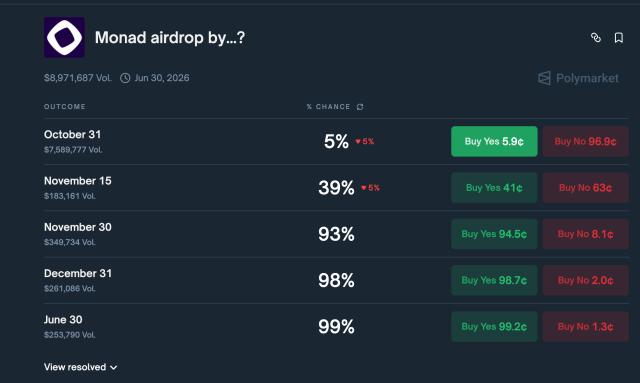Most of the tokens I once believed in and bought in the last cycle no longer exist.
Every cryptocurrency cycle sees the birth of thousands of tokens, each promising disruptive change, but when the bull market fades, only a few survive.
By the time the next cycle arrives, most tokens are dead: charts become empty, Discord groups go silent, and teams vanish without a trace.
What exactly happened?
The truth is simple: tokens die because they never move beyond the “speculative” stage.
They are born quickly, grow quickly, and then die even faster.
But the tokens that build the ecosystem become eternal.
The harsh truth is, you can't live without it.
The Death Trap for Most Coins
Most tokens don’t die from lack of popularity, but from lack of an economic system.
Their introduction is often accompanied by the following questions:
- There are no native demand drivers;
- There is no token consumption mechanism;
- There is no identity recognition or user retention mechanism;
- There is no real reason for users to continue using it after the rewards end.
Each cycle follows the same pattern: "develop → sell → exit → abandonment".
Liquidity mining attracts “mercenaries” rather than “citizens”;
Points and airdrops attract "hunters" rather than "believers".
When the incentives stop, the community stops.
The harsh reality is: you can’t build an economic system based on short-term greed.
Three Pillars of Token Survival
The difference between a dying token and a thriving ecosystem comes down to three core aspects:
→ Incentive loop;
→ User retention;
→ The real economic level.
Let’s delve deeper.
The Incentive Loop: The Internal Engine of Survival
The incentive loop is the core driving force of a sustainable ecosystem.
They create a feedback loop: user engagement → network growth → increased token utility → drives demand → attracts more users.
When this cycle is designed correctly, value will naturally compound. For example:
- GMX rewards stakers through actual income from traders, closely tying users to the growth of the protocol;
- Berachain directly links liquidity provision to the consensus mechanism, creating a self-reinforcing "proof of liquidity" loop;
- Ronin allows players to earn, spend, and reinvest, transforming gamers into a micro-economy.
Perpetual tokens don’t just “reward holders”; they allow users to become part of the ecosystem engine.
Every action taken by users strengthens the ecosystem as a whole, not just the price of the token.
User Retention: Transforming "Users" into "Citizens"
This is where most projects fail.
They confuse user acquisition with user retention.
They can attract people with rewards, but they can't make them stay.
The 1% of tokens that survive understand a deeper truth: people don’t stay for income, they stay for identity.
When a protocol provides users with a sense of belonging, status, or the opportunity to accumulate reputation, it transforms from a "platform" to a "nation." For example:
- idOS is building identity infrastructure across ecosystems;
- Base transforms developers into citizens through culture and recognition;
- Friend.tech demonstrates how reputation, social status, and emotional belonging can create massive on-chain stickiness.
The strongest retention system is not based on stealing, but on a sense of belonging.
Your users should feel like they're losing a part of themselves if they leave.
That's when you've built a real network.
The Real Economy: Where Tokens Gain Meaning
Speculation creates attention, practicality creates gravity.
When tokens are integrated into the real economy, they stop being chips and become coordinated currencies.
This is where the 1% really stands out:
- Solana’s memecoin and payment system creates a self-sustaining user economy;
- Arbitrum’s DAO funding cycle fosters builders, not beggars;
- The BNB token becomes the platform’s passport for transactions, gas fees, and project launches.
These economic dimensions connect: Speculation → Utility → Coordination → Sustainability.
When tokens are able to transfer value, access the network, manage funds, and support payments, they are no longer just projects but become "countries" with their own economies.
The life cycle of a long-lived token
Let's visualize this process:
- Narrative phase: The token launches with a clear story;
- Utility stage: Early users not only trade tokens but actually use them;
- Retention phase: The community forms a cycle around the token (equity, governance, identity);
- Expansion phase: The ecosystem begins to generate demand for new projects, integrations, or use cases.
At this point, the token no longer needs to rely on hype to survive, it becomes self-sustaining.
99% Death Spiral
The other 99% of tokens follow this path to death:
- Start the hype → Everyone rushes in;
- No utility → Token becomes purely speculative;
- Liquidity exit → holders sell off and large investors transfer;
- The community dies → it becomes silent; the token fades → the next round of narrative replaces it.
Their graphs all look the same: a peak followed by an endless descent.
This isn't bad luck, it's bad design.
A guide to action for the 1%
Here’s a framework every founder and investor should keep in mind:

- Stages: Startup → Growth → Maturity → Expansion
- Goal: Attract attention → Incentivize engagement → Build retention → Create a real economy
- Survival Keys: Storytelling + Fair Alignment → Real Yield, Not Inflation → Identity + Governance + Status → Integration into the Ecosystem
Summarize
Each cycle will eliminate the weak and make the strong.
Narratives come and go, but ecosystems remain.
These are the data that indicate a new bullish trend for the token that is about to emerge.







